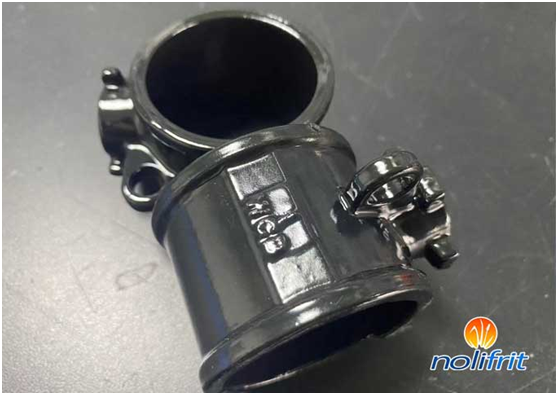Influence of Defects In Cast Iron Enamel Castings
The quality of enamel castings has a great influence on the effect of enamel products. The main defects in castings have the following effects on the quality of enamel products:

1. Blowhole: A blowhole is an exposed or concealed sand hole in a casting, and its surface is usually clean and smooth. The presence of pores in the casting will cause the porcelain layer to fall off, and the product will boil or overburn. Sometimes the porcelain surface will crack due to gas expansion.
2. Honeycomb: The cause of honeycomb is the high sulfur content of the casting, the poor fluidity of the metal liquid, and the cold cast iron line. The formation of honeycomb during casting will cause air bubbles or air holes in the enamel layer.
3. Trachoma: Trachoma is caused by the molding sand used for molding staying in the casting body. This defect will also occur when casting with cold cast iron. Trachoma can become one of the reasons for the pores and cracks in the enamel layer.
4. Slag eye: Slag eye is the slag inclusion that is not completely removed during casting. The slag eye will cause pores, cracks and devitrification in the enamel layer.
5. Cold Seat: A cold seal is a crack where the edges are fused. When casting cold cast iron with less phosphorus and more sulfur, it is easy to produce cold shut. Usually the cold space is not easy to find on the surface of the casting, but when such a casting is poured, cracks or disjoints will develop in the enamel layer.
6. Edge cracking: The defect of edge cracking is generally the edge of the product. Due to the uneven shrinkage caused by the improper structure of the product, the sulfur content in the casting is too large, thus increasing the hot brittleness of the cast iron, and the casting is demolded prematurely , Some parts produce white holes, and cracks and devitrification will occur in the enamel layer of this part.
7. Casting scar: It is caused by the small sand being covered by the cast iron film during casting, which will cause poor adhesion of the porcelain layer. The edge of this casting scar often protrudes above the porcelain layer.
8. White mouth: The existence of white mouth in the casting is not good for the quality of the product, because it has different physical and mechanical properties from the casting itself, especially the thermal expansion coefficient. Enamel products will crack or crack when fired.
9. Acute angle: It is the part where two enamel material surfaces are connected to form an acute angle. At this part, the bottom glaze and top glaze are often either too thin or too thick. Overburning occurs due to the thin bottom glaze layer, and many pores and air bubbles are assembled. If the bottom glaze layer and top glaze layer of these parts are applied, cracks, wrinkles, etc. will be generated.
10. Uneven wall thickness: Excessive difference in wall thickness leads to uneven heating of enamel products during firing. Some parts of the bottom glaze are overfired, and some bottom glazes are still raw. At the same time, the products are cooled unevenly, resulting in uneven color of the enamel. Uniform (matt), peeling or cracking. Generally, the thickness is not different from 1/2 as the standard, and if it exceeds, it will not be easy to have good quality.
11. Warping: The warping of enamel products is mainly due to the stress caused by uneven shrinkage of the castings. When the products are improperly placed in the firing furnace, they will also warp.